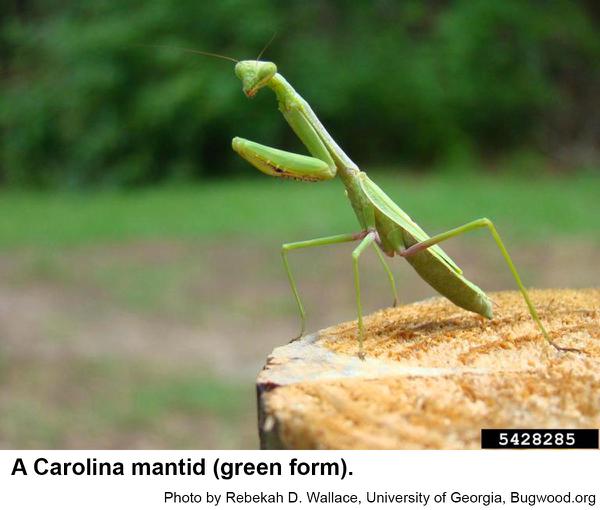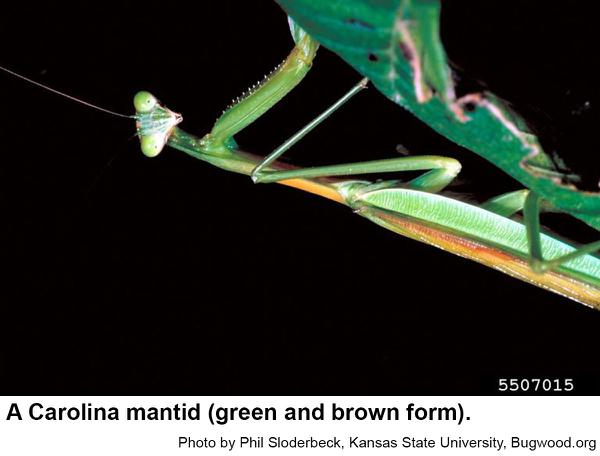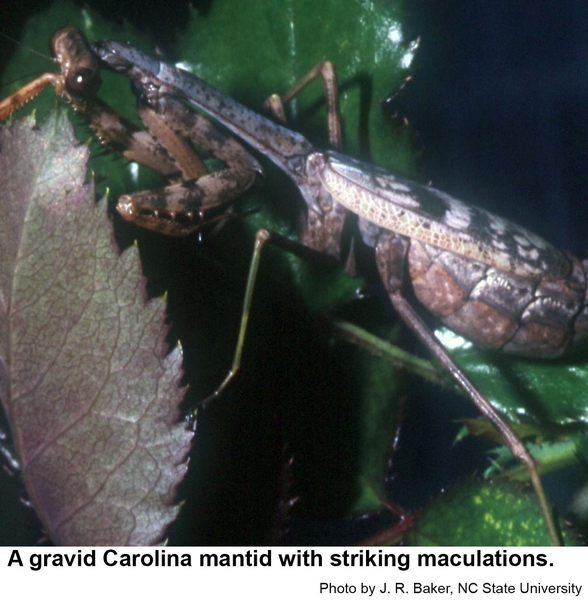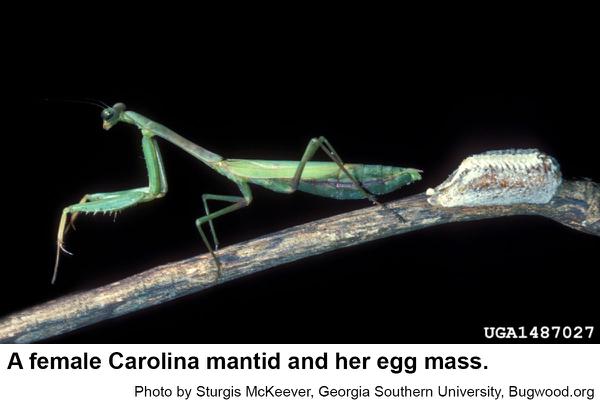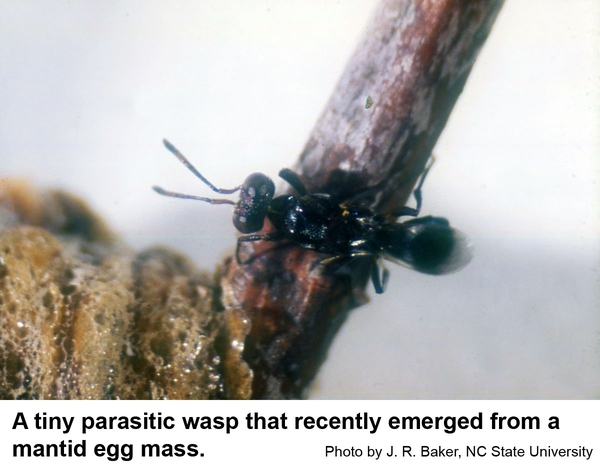Description and Biology
The Carolina mantid, Stagmomantis carolina, is a fairly common predator of insects in our landscapes. These insects are about 2.5 inches long and are highly variable in color. They may be gray with spots, green, green with spots or bands, brown, and brown with spots or bands. The front legs are usually held folded in front of the insect in a pose resembling an attitude of prayer. When an unfortunate insect gets too close, the mantid's fore legs lash out, grab the prey, and then hold it while it is eaten. In autumn, 50 or more eggs are laid in a frothy mass (the oothecum). The froth then hardens around the eggs and provides some protection from the elements and predators. These insects overwinter in the egg stage and in spring tiny new mantids hatch and feed on small insects. Carolina mantids molt and grow during the summer, gradually acquiring wing buds with each later molt. They mature in late summer and have fully functional wings by that time. One unfortunate characteristic of mantids is that they are often cannibalistic. Females sometimes consume their partners during and after mating. We have one generation per year.
Residential Recommendations
Carolina mantids are beneficial in that they feed on plant pests, but on the other hand, they also feed on bees and butterflies. It is a fascinating thing to feed a cricket or some other small insect to a mantid. Mantids are relatively easy to keep in captivity if they are fed daily and provided with a source of water. It is possible to purchase mantid ootheca (usually that of Chinese mantids), but these should be refrigerated or kept outdoors during the winter. The problem with bringing the egg masses indoors is that room temperatures cause the eggs to hatch prematurely and the house is soon crawling with tiny praying mantids at a time of year that is very difficult to find insects to feed them. They then start eating each other. The downside to keeping ootheca are outside is that tiny wasps may lay their eggs through the covering to parasitize the overwintering eggs.
References
- How to Take Care of a Praying Mantis. Anonymous. No Date. wikiHow to do anything...
- Praying Mantid caresheet. Anonymous. No Date. Amateur Entomologists' Society.
- Praying Mantids. Watkins, G and R. Bessin. 2003. Entomology at the University of Kentucky. Entfact-418.
- Species Stagmomantis carolina - Carolina Mantis. DiTerlizziy , T. 2015 (updated). BugGuide hosted by Iowa State University Department of Entomology.
- Extension Plant Pathology Publications and Factsheets
- Horticultural Science Publications
For assistance with a specific problem, contact your local N.C. Cooperative Extension Center
This Factsheet has not been peer reviewed.
Publication date: Sept. 9, 2016
Reviewed/Revised: June 17, 2021
N.C. Cooperative Extension prohibits discrimination and harassment regardless of age, color, disability, family and marital status, gender identity, national origin, political beliefs, race, religion, sex (including pregnancy), sexual orientation and veteran status.

